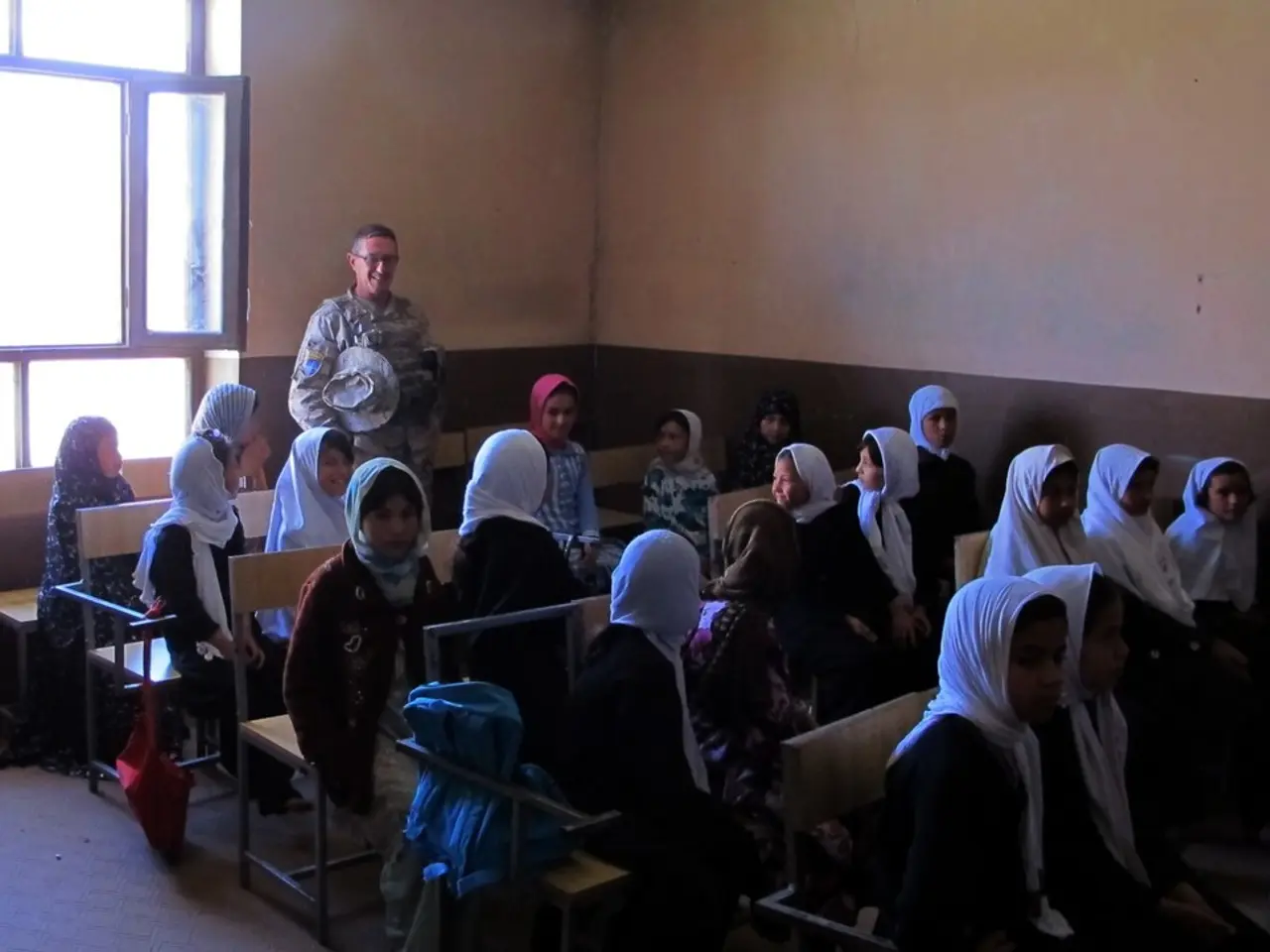Aiming for Curriculum Harmonization According to Set Educational Guidelines
In the realm of secondary education, effective alignment of curricula with established standards plays a crucial role in enhancing teaching practices, improving student learning outcomes, and overall academic performance.
Curriculum alignment is a process that ensures educational experiences and learning objectives are synchronized with established standards. This alignment serves as a benchmark, ensuring that curricula align with both national priorities and the specific needs of state education systems. In the case of secondary education, state-specific standards often emphasize the importance of local context and culture, allowing educators to tailor their curricula.
One of the key challenges in curriculum alignment is the disparity between state and national standards, coupled with resource constraints, insufficient professional development opportunities, and resistance to change. However, curriculum alignment fosters accountability among educational institutions, allowing assessment bodies to evaluate student progress based on standardized criteria.
Data-driven decision-making is vital in the context of curriculum alignment. Regular assessments and feedback loops allow educators to evaluate the effectiveness of their instructional strategies and make informed adjustments. This data-driven approach is essential in ensuring that curricula remain aligned with evolving educational requirements and practices.
A growing emphasis is being placed on social-emotional learning (SEL) as part of the curriculum, addressing not only academic skills but also the social and emotional development necessary for student well-being and achievement.
Current best practices for curriculum alignment focus on ensuring that the curriculum matches updated state or national academic standards, using high-quality instructional resources, integrating ongoing assessment with instruction, and promoting collaborative goal-setting among educators.
Key best practices include aligning curriculum with the most current academic standards, using high-quality instructional resources aligned to standards, integrating assessment authentically into instruction, encouraging teacher collaboration in Professional Learning Communities (PLCs) when establishing Student Growth Objectives (SGOs), designing curriculum and instructional materials that are culturally responsive and engaging, leveraging tools and frameworks to continuously review and update curriculum, promoting alignment across multiple related goals, and applying multi-criteria decision-making frameworks in specialized areas.
These practices collectively support a standards-aligned, coherent, and effective curriculum that prepares secondary students for academic success and lifelong learning. Districts are encouraged to make curriculum alignment a dynamic and collaborative process grounded in research, data, and continuous improvement.
The evolution of curriculum standards can be traced back to the early 20th century, with educational reformers advocating for a more systematic approach to education. Today, the historical context of curriculum standards underscores the importance of alignment in secondary education, ensuring all students are prepared for higher education and the workforce.
Key national standards include the Common Core State Standards (CCSS) and Next Generation Science Standards (NGSS). Personalized learning, the integration of digital resources and data analytics, continuous professional development, and collaboration among educators and stakeholders are all significant trends in curriculum alignment.
Collaborative planning, assessments, and the use of curriculum mapping software, standards-based assessment tools, and collaborative planning applications are essential tools for facilitating curriculum alignment with standards. The Elementary and Secondary Education Act of 1965 marked a pivotal moment, emphasizing accountability and aligning curriculum with educational standards at the federal level.
- In conjunction with the emphasis on social-emotional learning, effective e-learning strategies and professional development opportunities can play a crucial role in fostering student growth and achievement by providing educators with the necessary tools to tailor instruction and address both academic and emotional needs.
- To ensure an education-and-self-development experience that remains aligned with contemporary academic requirements and practices, educators may find it beneficial to incorporate data-driven decision-making, encouraging teacher collaboration in Professional Learning Communities (PLCs), and leveraging tools such as curriculum mapping software, standards-based assessment tools, and collaborative planning applications.




